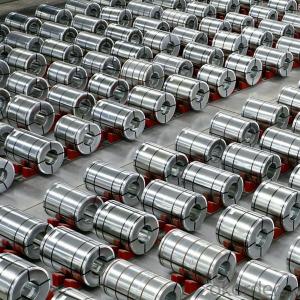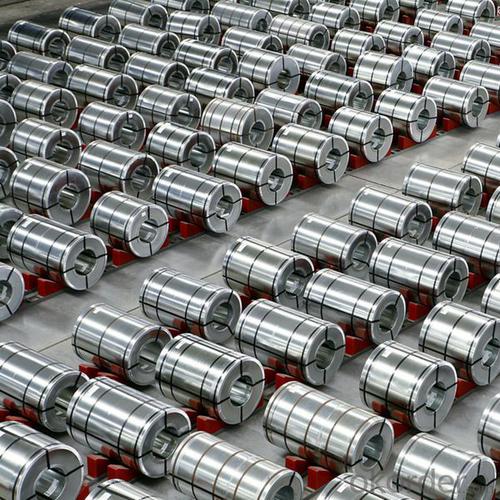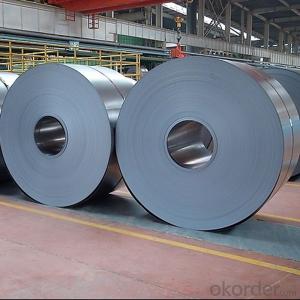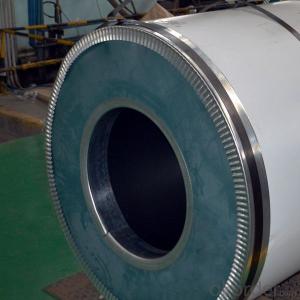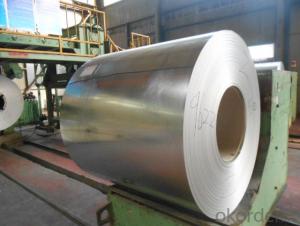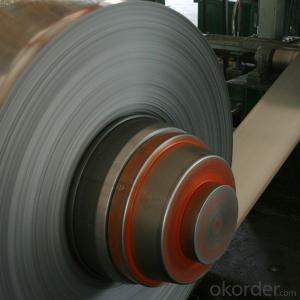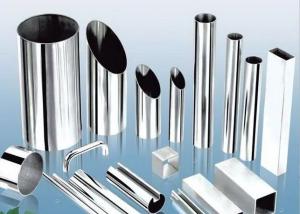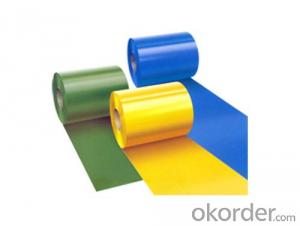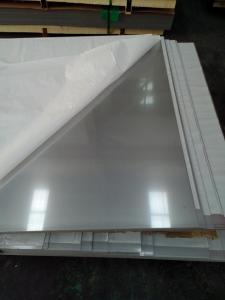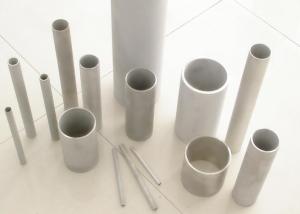2016 New Stainless Good Quality Steel Coils NO.1 Finish Steel Coils
- Loading Port:
- Tianjin
- Payment Terms:
- TT OR LC
- Min Order Qty:
- 25 m.t.
- Supply Capability:
- 20000 m.t./month
OKorder Service Pledge
OKorder Financial Service
You Might Also Like
Specification
Products Description for Stainless Steel Coils/Sheets:
Type | Stainless Steel Coil /Cold rolled Steel Coils |
Thinckness | 0.23mm-0.8mm |
Diameter | 115mm-560mm |
Quantity | as customer's requirement |
Finish | 2B,BA,HL,MIRROR,NO.1-NO.4,8K,and so on. |
Standard | ASME, ASTM, EN ,BS,GB,DIN, JIS etc |
Material | 201,202, 301,304,410,430,409 |
Application range | Foodstuff, Gas, metallurgy, biology, electron, chemical, petroleum, boiler, nuclear energy, Medical equipment, fertilizer etc |
Package | Standard export sea-worthy packing |
Delivery time | 7-15 days |
Quality | Primary |
Productivity | 3000-4000 tons/month |
Note | We can produce other standard as the customers’ requirement |
Detail picture for Stainless Steel Coils/Sheets
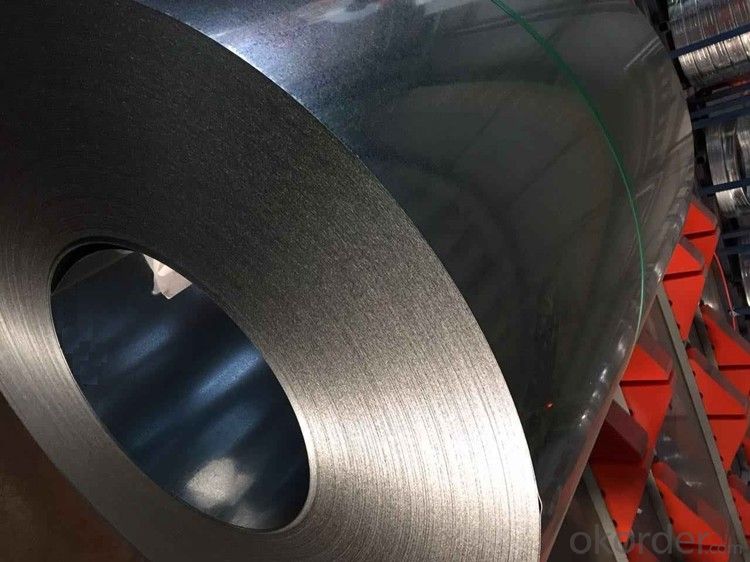
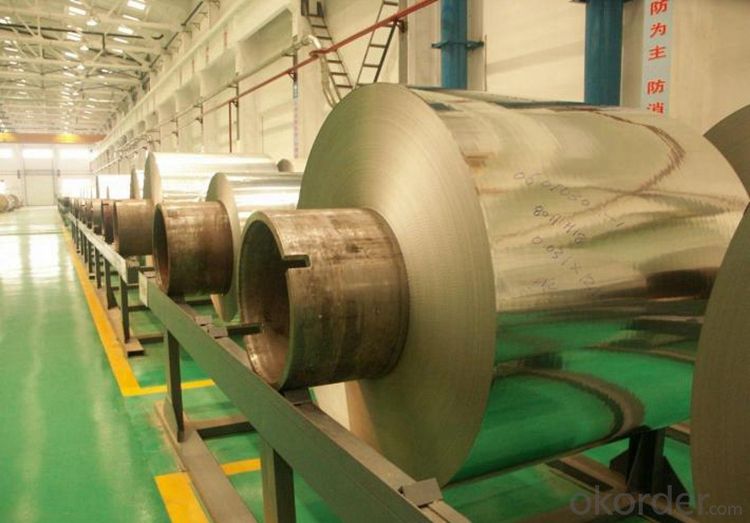
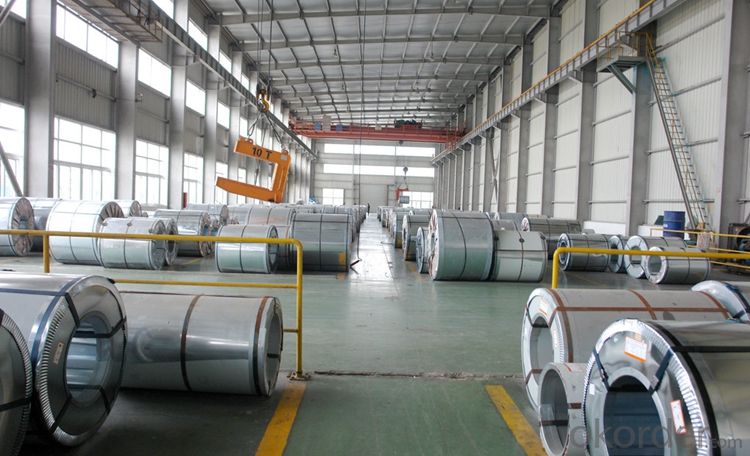
Features of Stainless Steel Coils
(1)Good ductility
(2)Good corrosion resistance
(3)Excellent abrasion resistance and fatigue strength
(4)Good weldability
(5)Oxidation resistant performance
(6)Excellent in high temperature
Application for Stainless Steel Coils/Sheets
Finish | Definition | Application |
2B | Those finished, after cold rolling, by heat treatment, pickling or other equivalent treatment and lastly by cold rolling to given appropriate luster. | Medical equipment, Food industry, Construction material, Kitchen utensils. |
BA | Those processed with bright heat treatment after cold rolling. | Kitchen utensils, Electric equipment, Building construction. |
NO.3 | Those finished by polishing with No.100 to No.120 abrasives specified in JIS R6001. | Kitchen utensils, Building construction. |
NO.4 | Those finished by polishing with No.150 to No.180 abrasives specified in JIS R6001. | Kitchen utensils, Building construction, Medical equipment. |
NO.1 | The surface finished by heat treatment and pickling or processes corresponding there to after hot rolling. | Chemical tank, pipe. |
FAQ for Stainless Steel Coils/Sheets:
Q: How long is the delivery time?
A: Normally 30-40 days, but mostly according to the specific requirements or the quantity
Q: Could you send me sample?
A: We can supply you with the sample for free, but the delivery charges will be covered by customers.
FAQ for Stainless Steel Coils/Sheets:
Q: How can I get the samples?
A: If you need some samples to test ,please pay for the transportation freight of samples and our samples are free for you.
Q: How can I get your price list?
A: Please send us your email or fax and order information – Quantity, Specification (steel type, thickness, width, surface finish), then I can send you the price list.
- Q: Can stainless steel sheets be used for fireplaces?
- Indeed, fireplaces can make use of stainless steel sheets. Owing to its remarkable ability to endure intense heat and its sturdy nature, stainless steel has emerged as a favored material for fireplaces. Its capacity to withstand the scorching temperatures produced by the fire without distorting or liquefying renders it a secure and dependable alternative. One can employ stainless steel sheets for constructing the fireplace's interior, encompassing the firebox and chimney, or for adding a decorative touch to the fireplace's exterior. Moreover, stainless steel's resistance to corrosion and rust guarantees that the fireplace will retain its aesthetic appeal as time progresses.
- Q: What are the common uses of stainless steel sheets in the automotive industry?
- Stainless steel sheets are commonly used in the automotive industry for various purposes such as manufacturing body panels, exhaust systems, fuel tanks, and decorative trim. The corrosion-resistant properties of stainless steel make it an ideal material for these applications, providing durability and aesthetic appeal to vehicles.
- Q: How do you install stainless steel sheets?
- In order to install stainless steel sheets, there are a few basic tools you will need and some steps that should be followed: 1. Begin by measuring and preparing the area where you intend to install the stainless steel sheets. Ensure that the surface is clean, dry, and free from any dust or debris. If necessary, smooth out any rough spots or imperfections on the surface by sanding them down. 2. Cut the sheets to the desired size and shape using a metal cutting tool such as a circular saw or a jigsaw with a metal cutting blade. For your safety, remember to wear protective goggles and gloves while cutting. 3. Apply a high-strength construction adhesive to the backside of the stainless steel sheet. Ensure that the adhesive is applied evenly, without leaving any gaps or air pockets. To achieve better coverage, you may use a notched trowel to spread the adhesive. 4. Carefully position the stainless steel sheet onto the prepared surface, making sure it is properly aligned. Apply gentle and consistent pressure to ensure that the sheet adheres to the surface. A roller or clean cloth can be used to firmly press the sheet onto the surface. 5. If necessary, use stainless steel screws to further secure the sheet. Place the screws evenly along the edges and corners, ensuring proper spacing. Be cautious not to overtighten the screws in order to avoid damaging the sheet. 6. Trim any excess stainless steel sheet that hangs over the edges to achieve the desired size. Use a metal cutting tool for this task. Once trimmed, smooth out any rough edges with a file or sandpaper. To give the sheet a polished finish and remove any smudges or fingerprints, a stainless steel cleaner can be used. Always make sure to follow the manufacturer's instructions for the specific stainless steel sheets you are using, as installation methods may slightly vary. If you are unsure or uncomfortable with the installation process, it is recommended to seek professional assistance.
- Q: Are stainless steel sheets suitable for roofing?
- Yes, stainless steel sheets are suitable for roofing. They have excellent durability, corrosion resistance, and can withstand extreme weather conditions. Additionally, their sleek appearance adds aesthetic value to any building.
- Q: How do you calculate the weight of a stainless steel sheet?
- In order to determine the weight of a stainless steel sheet, one must possess knowledge of its dimensions (length, width, and thickness) as well as the specific gravity of stainless steel. Firstly, the volume of the stainless steel sheet can be ascertained by multiplying the length, width, and thickness. This will yield the volume in cubic units. Subsequently, the volume is to be multiplied by the specific gravity of stainless steel, which typically stands at around 7.93 g/cm³ (grams per cubic centimeter). This will provide the weight of the stainless steel sheet in grams. To convert the weight into a different unit, such as kilograms or pounds, the weight in grams should be divided by the appropriate conversion factor. For instance, to convert grams into kilograms, divide by 1000. To convert grams into pounds, divide by 453.59237. It is crucial to bear in mind that this calculation furnishes an approximation of the weight, as variations in the specific gravity of stainless steel may occur based on the precise alloy and composition of the sheet.
- Q: Do stainless steel sheets require any special handling during installation?
- Yes, stainless steel sheets require special handling during installation to ensure their proper installation and to prevent damage. Some important considerations include using proper lifting equipment, ensuring a clean and dry surface, avoiding contact with other metals to prevent galvanic corrosion, and following the manufacturer's guidelines for installation and maintenance.
- Q: Are stainless steel sheets suitable for high-traffic areas?
- Yes, stainless steel sheets are highly suitable for high-traffic areas. They are durable, resistant to corrosion, and can withstand heavy use. Additionally, stainless steel sheets have a sleek and modern appearance, making them a popular choice for public spaces such as airports, hospitals, and commercial buildings.
- Q: Can stainless steel sheets be used for elevator interiors?
- Yes, stainless steel sheets can be used for elevator interiors. Stainless steel is a popular choice for elevator interiors due to its durability, sleek appearance, and resistance to corrosion and wear. It provides a clean and modern look, making it a suitable material for elevators in commercial buildings, hotels, and other high-traffic areas.
- Q: What are the benefits of using perforated stainless steel sheets?
- There are several benefits of using perforated stainless steel sheets in various applications. Firstly, perforated stainless steel sheets offer excellent strength and durability. Stainless steel is known for its high tensile strength and resistance to corrosion, making it a reliable choice for applications that require strong and long-lasting materials. The perforations in the sheets also do not compromise their structural integrity, ensuring that they can withstand heavy loads and harsh environments. Secondly, perforated stainless steel sheets provide excellent ventilation and airflow. The perforations allow air and other gases to pass through the sheets, making them ideal for applications that require proper ventilation, such as HVAC systems, industrial machinery, and automotive components. This ventilation capability helps prevent the buildup of heat and moisture, which can be crucial in maintaining the efficiency and safety of various equipment. Additionally, perforated stainless steel sheets offer versatility in design and aesthetics. The ability to customize the size, shape, and pattern of the perforations allows for the creation of unique and visually appealing designs. This makes them suitable for architectural applications, interior design elements, and decorative purposes. The wide range of available perforation patterns also enables the control of light transmission, creating interesting lighting effects or privacy screens. Moreover, perforated stainless steel sheets have excellent filtration capabilities. The perforations can be designed to filter out specific particles or substances, making them ideal for applications in the food and beverage industry, pharmaceuticals, and water treatment systems. This feature ensures the cleanliness and purity of the materials or fluids passing through the sheets, improving overall product quality and safety. Lastly, perforated stainless steel sheets are easy to clean and maintain. Stainless steel is non-porous, making it resistant to stains, dirt, and bacteria. This property, combined with the perforations, allows for easy cleaning and disinfection, making them suitable for applications that require high levels of hygiene, such as commercial kitchens, medical facilities, and laboratories. In summary, the benefits of using perforated stainless steel sheets include their strength and durability, ventilation capabilities, versatility in design, filtration capabilities, and ease of cleaning and maintenance. These qualities make them a preferred choice in a wide range of industries and applications.
- Q: How do I determine the flatness of stainless steel sheets?
- To assess the flatness of stainless steel sheets, the following steps can be followed: 1. Visual Examination: Initially, visually inspect the sheet for any visible indications of warping, bending, or unevenness. Look for noticeable waves, ripples, or twists on the surface. While this method may not provide precise results, it can give a preliminary understanding of the overall flatness of the sheet. 2. Straight Edge Measurement: Position a straight edge, such as a ruler or long level, on the surface of the stainless steel sheet. Move the straight edge across different areas of the sheet, paying attention to both the center and edges. Observe if there are any gaps or spaces between the straight edge and the sheet. A continuous contact between the straight edge and the sheet suggests a satisfactory level of flatness. 3. Feeler Gauge Utilization: Employ a feeler gauge, which is a precise measurement tool containing thin metal blades of varying thicknesses. This tool can be used to more accurately measure the gap between the straight edge and the stainless steel sheet. Slide the feeler gauge into any gaps between the sheet and the straight edge, noting the blade thickness that fits snugly. This will help determine the extent of any unevenness or bowing present. 4. Laser Measurement: For more accurate measurements, a laser measuring device can be employed. Position the laser device at one end of the sheet and measure the distance from the laser to the surface at different points along the length of the sheet. Repeat this process at the opposite end of the sheet. Comparing these measurements will provide an indication of any variations in flatness. 5. Professional Testing: In cases where the stainless steel sheets are intended for critical applications or when precise flatness is essential, consulting with a professional testing service is advisable. These experts can employ advanced techniques such as optical profilometry or coordinate measuring machines to accurately measure the flatness of the sheet. It is important to acknowledge that due to the inherent characteristics of stainless steel, minor deviations from perfect flatness may be acceptable within industry standards. The required level of flatness will depend on the specific application and the tolerance standards set by the manufacturer or customer.
Send your message to us
2016 New Stainless Good Quality Steel Coils NO.1 Finish Steel Coils
- Loading Port:
- Tianjin
- Payment Terms:
- TT OR LC
- Min Order Qty:
- 25 m.t.
- Supply Capability:
- 20000 m.t./month
OKorder Service Pledge
OKorder Financial Service
Similar products
Hot products
Hot Searches
Related keywords
